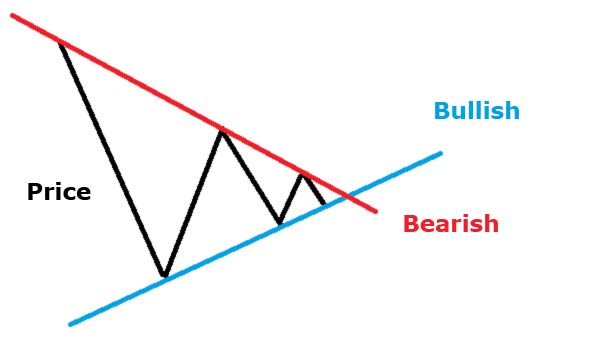When we think about the different stock-market analysis types, we usually think about (or we were told) two: fundamental and technical analysis.
It is true that these two are different enough to make a distinction in two types, but allow me to add one more element to the comparison, the bias component. This would leave us unifying these two analyses and discovering a new one: the qualitative analysis.
Fundamental and technical analysis
We begin with the classical comparison of the different analysis types.
Fundamental analysis
The fundamental analysis obtains information from business results, macroeconomic data and sectorial perspectives. With all these, it tries to obtain inversion decisions in those markets and assets that considers are undervalued according to its real price.
Example of inversion for fundamentals:
Firm X from the energy sector has published a growth of 40%respect the previous year, much better than the other firms in the sector. Analyzing the PER’s company and knowing that governments usually support this kind of enterprise, I consider that it is a good opportunity to buy shares of the firm X, with a sales projection in the next 4-5 years.
Technical analysis
In the technical analysis, however, part of the premise is that price discounts everything. Meaning, all information known so far, business results, macroeconomic data, etc… All are considered in the actual price. The inversion decision with the technical analysis lies in analyzing price graphs, together with indicators and price patterns.
Fundamentals inversion example:
Firm X has returned to the price of 10€ a share. In the last 3 years, every time that has reached this level there has been a ricochet in the price, making a strong support line. Considering that the price of the indexes is getting back to bullish trends, and considering that it is a good opportunity to buy shares from firm X at 10€, with a sales projection almost arriving at the next resistance to 12€ in the following months.
Although there is quite an argument between one analysis type and the other, the truth is that they are two different ways of seeing reality.
There are traders that even combine both analyses: they use the fundamental analysis to conduct a global analysis to decide in which market/sector takes a stance, and the technical analysis to define the convenient moment and price.
Nevertheless, talking about realities, these two types of analysis have a common factor: the bias condition. That is, two fundamental expert analysts with experience can make contradictory inversion decisions with the same information.
The same can happen with technical analysis.
For example, a price that zigzags:

While some technical analysts can appreciate a bullish tendency that encourages them to make buying decisions, others can expect bearish tendencies due to the present one.
Quantitative analysis, or biased
The main characteristic of the quantitative analysis is that it is 100% objective. A quantitative analyst defines a trading strategy and it would be always known for certain rules based on technical indicators that are going to be made by mathematics equations.
In the end, this characteristic attributes its three intrinsic advantages:
- It allows for validating strategies. Given entry and exit objective rules, if we project the strategy with historical data, computers can make simulations of past years, obtaining information in few minutes. This gives the analyst information on how will his strategy works. That is the previous step before turning on an automatic trading system.
- No time should be spent on operations. A fundamental analyst devotes little time to command execution. A technical analyst, however, devotes a lot of time in the market operations, both in the opportunity tracking analyzing graphics and in the market monitoring. In the case of quantitative trading, the computing program does not demand human action.
- Emotional factor absence: Any person who has invested in the stock exchange market knows what we are talking about. We feel a lot of emotions when we make a decision: fear, euphoria, anxiety, concern, adrenalin… sometimes even we lose sleep over it. All of this affects decision making. Nevertheless, in quantitative trading emotions are kept apart, because is the automatic system that decides when to buy and to sell.
Here you have a summary table of the three (and not two) analysis types:
Fundamental Analysis |
Technical analysis |
Quantitative analysis |
|
| Source of information | Business and macroeconomic data | Actual price | Historical prices (precision) |
| Decisions | Predictions based on economic factors | Predictions based on prices graphics analysis | Predictions based on historic data strategy simulations |
| Temporal horizon | Long term | Short term | Short term |
| Time devoted to the operation | Medium | High | None |
| Emotional factor of the operation | Medium | High | Very low |
| Point of view | Biased | Biased | Unbiased |
So remember, when someone tells you that there is two stock-market analysis let them know that quantitative analysis also exists, and with tradeEAsy is now accessible to any trader.
¿Buscas una forma sencilla de iniciarte en el análisis cuantitativo?
Automatiza estrategias creados por ti mismo
